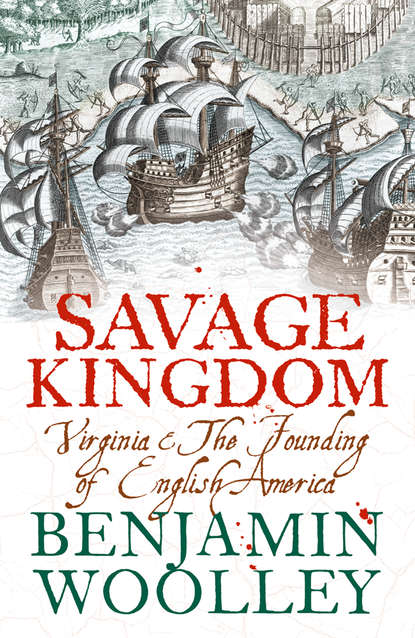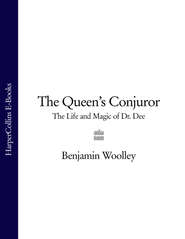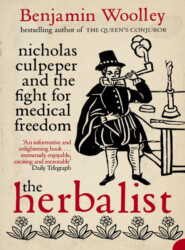По всем вопросам обращайтесь на: info@litportal.ru
(©) 2003-2024.
✖
Savage Kingdom: Virginia and The Founding of English America
Настройки чтения
Размер шрифта
Высота строк
Поля
A model for such an undertaking could be found, the Hayeses believed, in the Low Countries. This collection of mostly Protestant city states, dominions of the Spanish Crown fighting for their independence, had created Europe’s most advanced trading region. They had ‘effected marvellous matters in traffic [trade] and navigation in few years’ by financing their expeditions through the issue of ‘main’ or public stock. In contrast, the English strategy of giving a grandee such as Raleigh a monopoly of trade with a particular region had resulted in failure. ‘It is honourable for a state rather to back an exploit by public consent than by private monopoly,’ the Hayeses concluded.
They therefore proposed that the King should give his assent to an Act of Parliament to authorize the setting up of a public company to colonize America. This was a matter of urgency, as ‘the want of our fresh and present supply of our discoveries [in Virginia] hath in manner taken away the title which the law of nations giveth us’ – in other words, use it or lose it.
Cecil was aware of the urgency, as well as the economic advantages, of a colonial venture. Spain’s enormous wealth, after all, rested upon her speculative ventures in South America, which were now profiting the new Spanish King Philip III to the tune of two million ducats a year – more than twice James’s entire annual income.
(#litres_trial_promo) Cecil was also aware of the growing success of London’s trading companies – indeed, James to a degree was coming to depend upon it, as the profits generated by these companies were helping to bankroll his overstretched royal exchequer. The newest, the East India Company, had been founded in 1600 by Sir Thomas Smythe, a close friend and generous supporter of the Crown. It had already sent several ships loaded with bullion to the Far East to buy spices and other exotic goods direct from suppliers. The sale of these items back in England was not only proving highly profitable, but suggested a lucrative new stream of customs revenue for the Crown.
However, the Hayeses had badly miscalculated. There was no way Cecil would countenance a public colonization venture, whatever the trade benefits. The very name ‘Virginia’ was a reminder why he considered this impossible. During the 1570s and ’80s, he and his father Lord Burghley had worked strenuously to marry Elizabeth off to one of Europe’s Catholic princes, so she could produce an heir. They had been fought all the way by a group of courtiers who opposed any such match on the grounds that she and therefore her kingdom would come under the sway of Catholic regimes they saw as tyrannical. It was this clique, egged on by Huguenot exiles wanting to avenge the massacre in Florida, that had promoted the cult of Elizabeth’s virginity. It became an emblem of Protestant purity and independence, which Raleigh had reinforced with his choice of name for English America.
Cecil had since managed to repair some of the diplomatic damage caused by these struggles, his efforts culminating with the Somerset House Peace Treaty with Spain, which was signed in 1604, a year after James ascended to the throne. But this had done nothing to diminish Virginia’s political potency. Just a few months before Cecil received the Hayeses’ proposal, a play called Eastward Hoe had been staged at the popular Blackfriars Theatre. It featured a dissolute ‘thirty-pound knight’ (a reference to King James selling off titles to raise ready cash) who had attempted to mount an expedition to the colony. ‘Virginia longs till we share the rest of her maidenhead,’ the expedition captain had boasted, in an effort to lure footloose and unemployed mariners into joining the mission. ‘You shall live freely there,’ he added, ‘without sergeants, or courtiers, or lawyers, or intelligencers’, the apparatus of oppressive government.
The play’s authors were arrested for such incendiary lines, and even now, one of them, Ben Jonson, was sending Cecil plaintive letters, begging for his freedom. In such circumstances, the idea of a royally endorsed public venture could not possibly be countenanced.
(#litres_trial_promo)
A private venture, on the other hand – that was a different matter, and a proposal for one just happened to be at hand. Cecil’s factotum, Sir Walter Cope, had long held an interest in foreign exploration, and around the same time as the Hayeses, had sent Cecil a private note suggesting a very different venture. Judge Sir John Popham, another prominent member of James’s government, ‘foreseeing in the experience of his place’ as King James’s Chief Justice ‘the infinite numbers of cashiered captains and soldiers, or poor artisans that would & cannot work, and of idle vagrants that may & will not work, is affectionately bent to the plantation of Virginia’. Cope proposed that a select group of trusted merchants and nobles be approached to fund a small, secret exploratory mission to America to trade with the Indians and search for valuable commodities. All that was required from Cecil was ‘two lines from your Lordship in particular, or from the Lords’ of the Privy Council in support of the venture, and an expedition would be under way in no time.
(#litres_trial_promo)
This was far more to Cecil’s liking. For all its negative political associations, there was something about Virginia that not even Cecil could completely resist. Raleigh’s geographer, the cleric and colonial propagandist Richard Hakluyt, had since 1599 adopted Cecil as a patron, and on his new master’s behalf uncovered several convincing reports referring to the existence of gold deposits in the ‘Appalatcy’ or Appalachian Mountains to the west of Roanoke. There were also references to a great salt-water lake lying somewhere to the northwest, which could be reached by river, suggesting there might be a route through the middle of North America to the Pacific – the long-cherished dream of a navigable westerly passage to Cathay and the riches of the Orient. Also, intelligence had revealed that, despite these reports, the Spanish had continued to ignore the areas of America north of Florida.
(#litres_trial_promo)
Cecil was in desperate need of new sources of revenue, not least to cover the cost of glorifying his London residence, which, he admitted to a friend, had ‘almost undone me’. Furthermore, to secure his throne, James had been forced to spend heavily on securing the necessary political support among England’s anti-Scottish elite, and the royal exchequer was already stretched to breaking point. Any venture that had the potential for private profit and royal revenue could not be ignored.
(#litres_trial_promo)
Nothing more was heard of the Hayeses’ scheme. But within a few weeks of Cope’s letter arriving at Cecil House, the King had been presented with a royal charter to launch a new Virginia venture as a private enterprise, enveloped in secrecy.
THREE The Adventurers (#ulink_6d677d5a-52d0-5854-9a34-5202cd94ecd7)
AS A FOUNDING DOCUMENT, providing the legal basis for what became English America, the Virginia Charter that received the royal seal on 10 April 1606 was no Magna Carta or Declaration of Independence. In return for a 20-per-cent share of any precious metal they discovered, the King merely offered certain ‘Knights, Gentlemen, merchants and other Adventurers’ – the so-called ‘patentees’ – permission to ‘make habitation, plantation and to deduce a Colony of sundry of our people into that part of America commonly called Virginia’.
Lip service was paid to the mission having a higher religious purpose ‘in propagating of Christian Religion to such people as yet live in darkness’, meaning the Indians, but it was clear that the true motive was monetary, the charter focusing heavily on the ‘commodities and hereditaments’ to which the patentees, as well as the Crown, would be entitled.
‘For the more speedy accomplishment of their said intended plantation and habitation,’ the patentees were split into two groups, each given a different region of North America to colonize. The region between 38 and 45 degrees latitude (from modern Philadelphia to the Canadian border) came under the control of a group of merchants from the West Country ports of Bristol, Exeter and Plymouth, led by Chief Justice Sir John Popham. ‘Undertakers [i.e. investors], gentlemen, merchants &c’ of London made up the other group, who formed what became known as the Virginia Company. They were to develop the region between 34 and 41 degrees, the 450-mile stretch of coastline running from modern Cape Fear to Philadelphia.
(#litres_trial_promo)
Most of London’s trading companies were managed by a governor, appointed by investors. The Virginia Company was to be different. Instead of a governor, Cecil set up a ‘Royal Council’ of thirteen grandees to supervise the company’s affairs, which reported directly to him. Its powers were modelled on those of the royal councils long established to deal with strategically sensitive royal possessions, such as Ireland and the North of England.
(#litres_trial_promo) Sir Thomas Smythe, the City’s most powerful merchant and one of the royal exchequer’s most generous creditors, was made company treasurer, responsible for day-to-day business.
These arrangements soon caused problems. Within a month, there were complaints that the council’s interference had ‘exceedingly cooled the heat’ of investors.
(#litres_trial_promo) Matters were made worse by Cecil insisting that preparations for the expedition be undertaken in complete secrecy, so as not to alert the Spanish.
Even without such impediments, finding backers was difficult. North America had a reputation as a financial slough. Since the 1570s, many a merchant’s fortunes had been sunk in the middle of the Atlantic, or been lost at the hands of the Spanish or Indians on a distant shore. Those missions that had returned a profit had done so by engaging in ‘privateering’, raiding stray Spanish treasure ships in the Caribbean, a practice that had been officially sanctioned in Elizabeth’s time, but banned since the signing of the Somerset House Peace Treaty with Spain.
By the summer of 1606, there were few signs of progress, and gloom about the project’s prospects intensified with news that the West Country group had managed to equip and dispatch a ship called the Richard in August, to reconnoitre a suitable place to settle in the region of Sagadahoc, Maine.
By the autumn, the pressure was intense. If an expedition was not dispatched soon, it would arrive in Virginia too late to plant crops to feed the settlement the following winter.
On or soon after 20 November, a meeting of the London Virginia Company was called at Smythe’s offices in Philpot Lane, an inconspicuous alley just north of Billingsgate, London’s fish market. Smythe’s Great Hall, decorated with souvenirs from his other trading ventures, including an Indian canoe suspended from the ceiling, was a hub of his various global trading interests, and was now inaugurated as the headquarters of the London company’s American venture.
There is no record of that meeting. All the relevant paperwork was later seized by order of the Privy Council, and it has not been seen since.
(#litres_trial_promo) Nevertheless, it is likely that the motley crew of ‘principal adventurers’ that gathered together for the first time that day would not have inspired confidence, nor the final tally of resources that Smythe had managed to assemble.
Smythe had called the meeting because at last there were signs of progress. Three ships had been hired for the expedition, which were now ‘ready Victualled, rigged and furnished’ for the forthcoming voyage. The government had also decided upon the leadership of the mission, and issued the ‘articles, Instructions and orders’ finalizing the way the colony would be run.
The document specifying these crucial matters was not, according to later complaints, ‘so much as published’ by Smythe, who apparently kept certain key details to himself. However, he must at least have now delineated some of its main points.
(#litres_trial_promo)
The settlement in Virginia, the government had decided, would be run not by a single governor, but, as one settler later put it, ‘aristocratically’, by a local council. This council was to govern the settlement according to laws set down by the Royal Council for Virginia in England, with powers to adjudicate over ‘the offences of tumults, rebellion, Conspiracies, mutiny and seditions in those parts which may be dangerous to the estates there, together with murther, manslaughter, Incest, rapes, and adulteries’, defendants being given the right to be tried before a jury of ‘twelve honest and indifferent persons’.
(#litres_trial_promo)
The membership of the local council, Smythe revealed, would not be chosen by the adventurers, or the wider membership of the Virginia Company, but by the Royal Council for Virginia in England, from among those he had invited to the meeting. The identity of those nominated, however, would not be revealed until they had reached America.
(#litres_trial_promo)
This news must have prompted some speculative glances around the room, as each adventurer sized up those who might soon determine his fortune and fate. Those destined to go on the first mission were ‘strangers to each other’s education, qualities, or disposition,’ one participant noted.
(#litres_trial_promo) Many were ‘cashiered captains’ in the afternoon of faltering careers, the average age being forty. Most would have described themselves as gentlemen of the Shires, members of a ‘middling’ class who, relative to their urban counterparts the merchants and lawyers, had not prospered in recent years.
The most senior was a 56-year-old veteran of the Irish and Low Countries campaigns, Edward Maria Wingfield. Of those about to sail, he was the only patentee, the only one whose name appeared on the Virginia Charter as one of the ‘humble suitors’ given permission to colonize North America.
To many, Edward Maria’s distinguishing feature was his middle name, which prompted the impressive explanation that it had originally been given to his father, in recognition of being godson to Henry VIII’s sister, Mary Tudor. Edward was the second of many generations to adopt the affectation, proudly showing off the family’s ancient lineage and royal connections. Some of his forebears had been loyal to Queen Mary, Henry VIII’s Catholic daughter, and were implicated in her suppression of Protestants in the 1550s. This has led to accusations that the family had Papist leanings. But another relation, Sir Edward Wingfield of Kimbolton, had taken part in the Essex Rebellion of 1599, usually considered a distinctly Protestant affair. There is no evidence that Edward Maria veered strongly in either direction. He seems to have adopted the religion of many conservative members of the gentry: pragmatic Protestantism, emphasizing social conformity over religious piety.
His father had died when he was seven, and aged 12 he became the ward of an uncle. When he was in his twenties, he studied law at London’s Inns of Court, but preferred soldiering, and served in the Low Countries. In 1586, he fought with distinction alongside his brother Thomas Maria at Zutphen, hailed by English Protestants as a landmark battle in the fight against Catholic oppression. Later, he was briefly prisoner of the Spanish along with Sir Ferdinando Gorges, who would later become a leading promoter of American colonization.
In the 1590s, Edward Maria had served in Ireland, where members of his family were leading English attempts to ‘colonize’ areas under Gaelic control. There he would have met Sir Ralph Lane, who had been governor of Raleigh’s ill-fated Roanoke colony, and it was perhaps from Lane that he developed an interest in colonial adventures further afield.
(#litres_trial_promo)
By 1604 he was back in England, and soon after became involved in the revived Virginia project, providing not only desperately needed financial support, but helping to secure the royal patent. He had also recruited some of the key personnel, including the mission chaplain, a 38-year-old Sussex vicar called Richard Hunt, and the ‘surgeon general’, Thomas Wotton. How he came to acquire such a prominent role so early on in the venture is unclear, but a decisive factor was likely to have been his family connection with the famous explorer and privateer Bartholomew Gosnold.
(#litres_trial_promo)
Gosnold had led the 1602 mission to Norumbega which had first challenged Raleigh’s Virginia monopoly. His return to England with profitable supplies of cedar wood and sassafras had also demonstrated the potential of North America as a source of natural commodities.
Since then, he and his shipmate, a silver-tongued lawyer called Gabriel Archer, had toured the taverns and company halls of London agitating tirelessly for a full-scale expedition, brandishing a persuasive tract written by Archer about their experiences of the ‘goodliest continent that ever we saw’.
(#litres_trial_promo) Their efforts resulted in Gosnold later being described as the ‘first mover’ of the Virginia venture,
(#litres_trial_promo) and attracting the valuable support of at least one prominent member of the Fishmongers’ Company.







